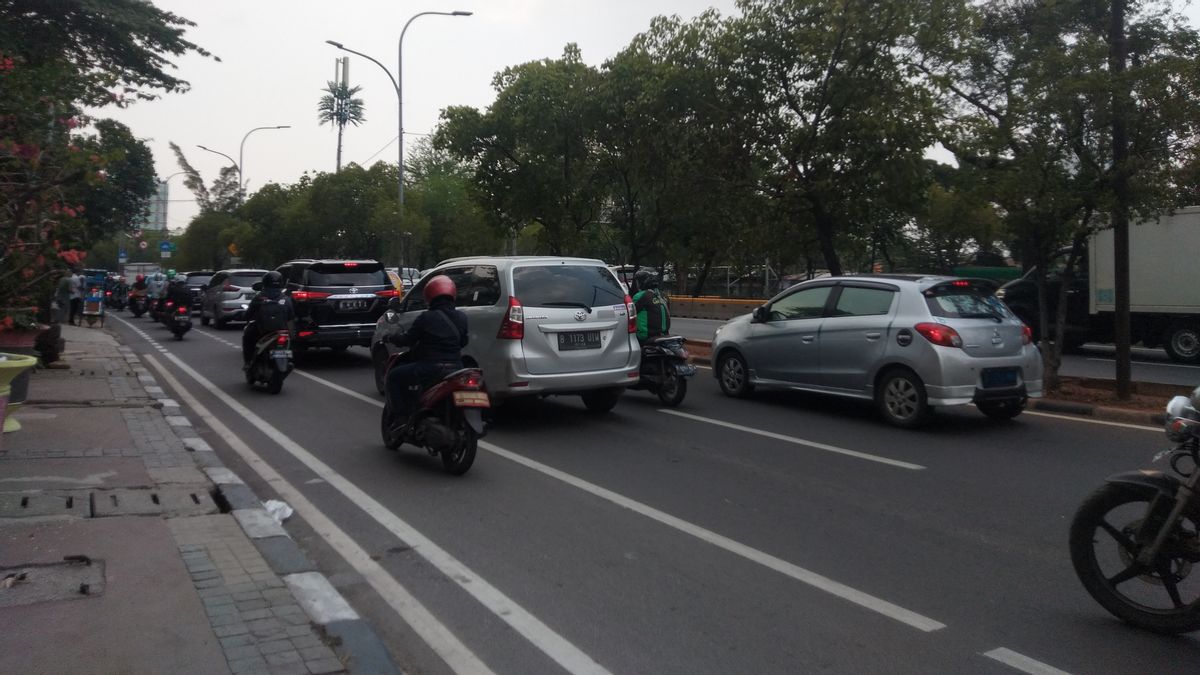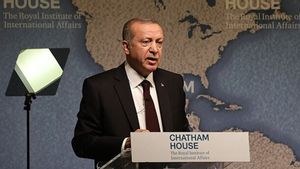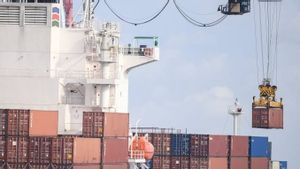JAKARTA - Regulation of the Governor of DKI Number 128 of 2019 concerning the prohibition of private vehicle users from crossing bicycle lanes is considered ineffective. This regulation had the initial objective of changing the driving behavior of the people of Jakarta from private to public vehicles, as well as to make Jakarta's air cleaner.
Based on data from the Traffic Directorate of Polda Metro Jaya, the bicycle lane in the Pramuka street area, East Jakarta, is the most frequently violated. However, in general, for two days (25-26 November) the police ticketed a total of 215 offenders who crossed the bicycle path. Motorcycle riders violated the most, namely 212 cases, while 2 offenders and 1 racer were car.
One of the motorcyclists who every day passes Pramuka Street, East Jakarta, Ghifary, complains about the existence of a bicycle lane there. He said, before the line existed, the road there was jammed during rush hour. After the passing of this lane and the implementation of the prohibition rules on crossing the bicycle lane, the vehicle density increased.
He also complained about the existence of endless bicycle lanes. This is what makes motorists violate the rules prohibiting private vehicles crossing the bicycle path.
"The rules for motorbikes not to cross the bicycle path are a bit troublesome. You see, in the morning, the traffic jams are really bad along the Pramuka road. The solution (decomposer) is not given, this actually adds to traffic jams," said Ghifary.
He suggested that the DKI Jakarta Transportation Agency loosen the rules for bicycle lanes during rush hour, like the odd-even system that is implemented on several roads in Jakarta.
Head of the DKI Jakarta Transportation Agency (Dishub) Syafrin Liputo said that the implementation of this bicycle lane is the mandate of the DKI Jakarta Provincial Government to change the paradigm of public transportation. So, regarding the loosening of the rules for bicycle lanes during rush hour, Syafrin said that this is unlikely.
"Previously we built infrastructure for the means, such as building roads for private vehicles. Now reversed, what is being prepared is the means for the mobility of people by preparing bicycle lanes," said Syafrin.
Syafrin admitted that changing the paradigm of society is not as easy as turning your hand. Therefore, he waited until road users felt that it was disadvantageous to bring private vehicles across the road due to congestion, and finally moved to use public transportation.
"We encourage it to use transportation. Now, its nature is the completion of the first and last mile to mass transportation. So, we facilitate from the beginning of the house to the station and bus stop using the bicycle lane. We will also complete the Mikrotrans in 2020," he explained.
The DKI Jakarta Provincial Government will also tighten the surveillance of the bikes on the bicycle lane with the addition of hundreds of CCTV-based surveillance cameras. Later, there will be 3 surveillance camera subsystems that will be deployed, the first is the area traffic control system (ATCS), the second is GPS tracking, and the passanger information system (PIS). Later, this system can make it easier to examine vehicles that violate the bicycle path.
"Gradually, starting 2020 we will prepare 100 cameras at 40 intersections in Jakarta, called the intelligence transport system," said Syafrin.
"We are analyzing which areas need to be installed as a form of our supervision. Because it is not only through officers but also through this," he added.
The rules regarding bicycle paths have now been implemented. In the bicycle lane regulation, violators are threatened with Article 284 of Law Number 22 Year 2009 concerning Road Traffic and Transportation. The maximum penalty is 2 months and a maximum fine of Rp. 500 thousand.
Meanwhile, vehicles parked in the bicycle lane will be towed and threatened to pay a levy in accordance with the DKI Regional Regulation of Rp. 250 thousand for motorbikes and Rp. 500 thousand for cars.
Areas provided for bicycle lanes are Jalan Medan Merdeka Selatan, Jalan MH Thamrin, Jalan Imam Bonjol, Jalan Pangeran Diponegoro, Jalan Salemba Raya, Jalan Proklamasi, Jalan Penataran, Jalan Pramuka, and Jalan Pemuda.
Then, Jalan Jenderal Sudirman, Jalan Sisingamangaraja, Jalan Panglima Polim, until Jalan RS Fatmawati Raya.
Furthermore, Jalan Tomang Raya, Jalan Kyai Caringin, Jalan Cideng Timur, Jalan Cideng Barat, Jalan Kebon Sirih, Jalan Fachrudin, Jalan Matraman Raya, Jalan Jatinegara Barat, and Jalan Jatinegara Timur.
The English, Chinese, Japanese, Arabic, and French versions are automatically generated by the AI. So there may still be inaccuracies in translating, please always see Indonesian as our main language. (system supported by DigitalSiber.id)













